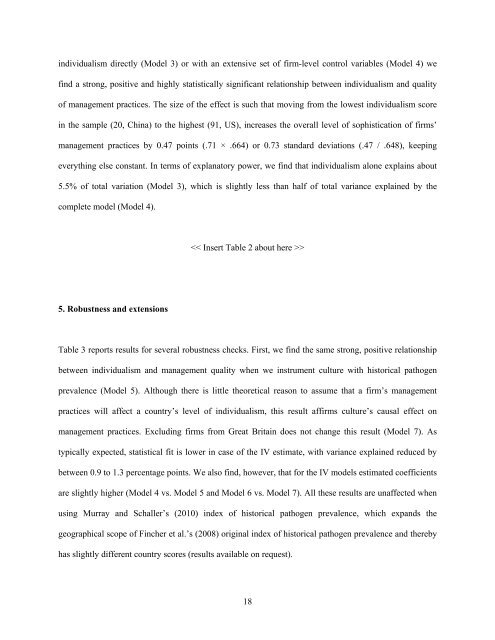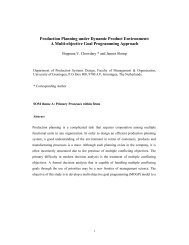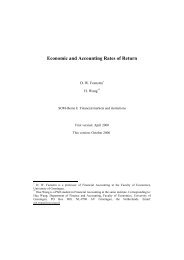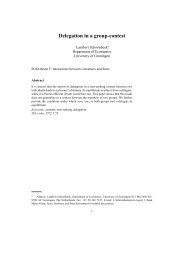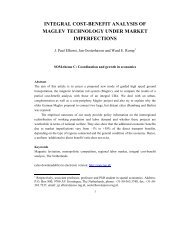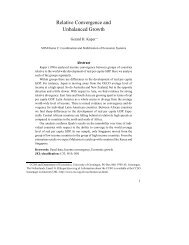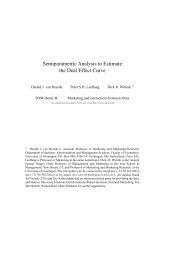Individualism and the cultural roots of management practices
Individualism and the cultural roots of management practices
Individualism and the cultural roots of management practices
Create successful ePaper yourself
Turn your PDF publications into a flip-book with our unique Google optimized e-Paper software.
individualism directly (Model 3) or with an extensive set <strong>of</strong> firm-level control variables (Model 4) we<br />
find a strong, positive <strong>and</strong> highly statistically significant relationship between individualism <strong>and</strong> quality<br />
<strong>of</strong> <strong>management</strong> <strong>practices</strong>. The size <strong>of</strong> <strong>the</strong> effect is such that moving from <strong>the</strong> lowest individualism score<br />
in <strong>the</strong> sample (20, China) to <strong>the</strong> highest (91, US), increases <strong>the</strong> overall level <strong>of</strong> sophistication <strong>of</strong> firms’<br />
<strong>management</strong> <strong>practices</strong> by 0.47 points (.71 × .664) or 0.73 st<strong>and</strong>ard deviations (.47 / .648), keeping<br />
everything else constant. In terms <strong>of</strong> explanatory power, we find that individualism alone explains about<br />
5.5% <strong>of</strong> total variation (Model 3), which is slightly less than half <strong>of</strong> total variance explained by <strong>the</strong><br />
complete model (Model 4).<br />
5. Robustness <strong>and</strong> extensions<br />
><br />
Table 3 reports results for several robustness checks. First, we find <strong>the</strong> same strong, positive relationship<br />
between individualism <strong>and</strong> <strong>management</strong> quality when we instrument culture with historical pathogen<br />
prevalence (Model 5). Although <strong>the</strong>re is little <strong>the</strong>oretical reason to assume that a firm’s <strong>management</strong><br />
<strong>practices</strong> will affect a country’s level <strong>of</strong> individualism, this result affirms culture’s causal effect on<br />
<strong>management</strong> <strong>practices</strong>. Excluding firms from Great Britain does not change this result (Model 7). As<br />
typically expected, statistical fit is lower in case <strong>of</strong> <strong>the</strong> IV estimate, with variance explained reduced by<br />
between 0.9 to 1.3 percentage points. We also find, however, that for <strong>the</strong> IV models estimated coefficients<br />
are slightly higher (Model 4 vs. Model 5 <strong>and</strong> Model 6 vs. Model 7). All <strong>the</strong>se results are unaffected when<br />
using Murray <strong>and</strong> Schaller’s (2010) index <strong>of</strong> historical pathogen prevalence, which exp<strong>and</strong>s <strong>the</strong><br />
geographical scope <strong>of</strong> Fincher et al.’s (2008) original index <strong>of</strong> historical pathogen prevalence <strong>and</strong> <strong>the</strong>reby<br />
has slightly different country scores (results available on request).<br />
18


